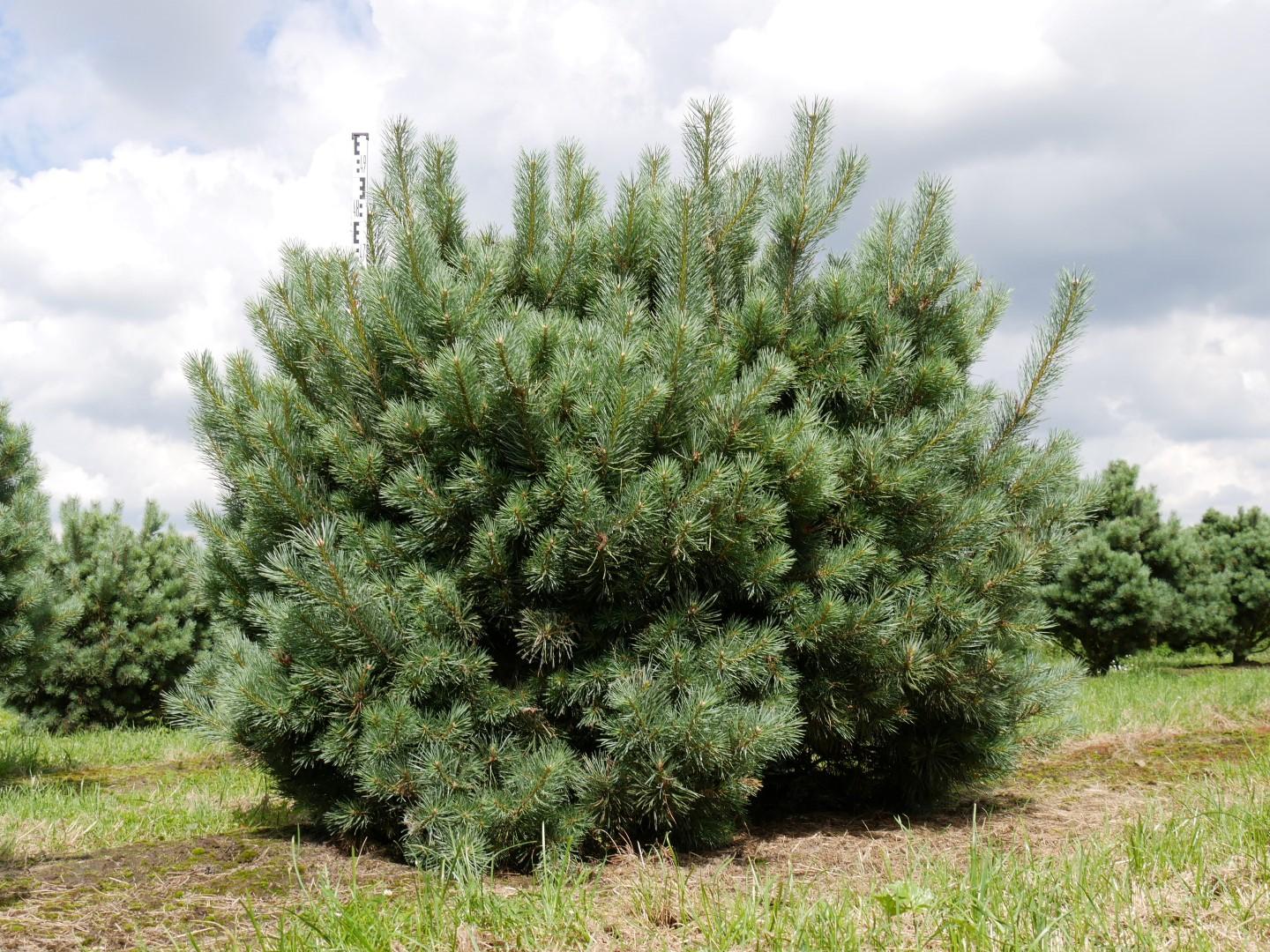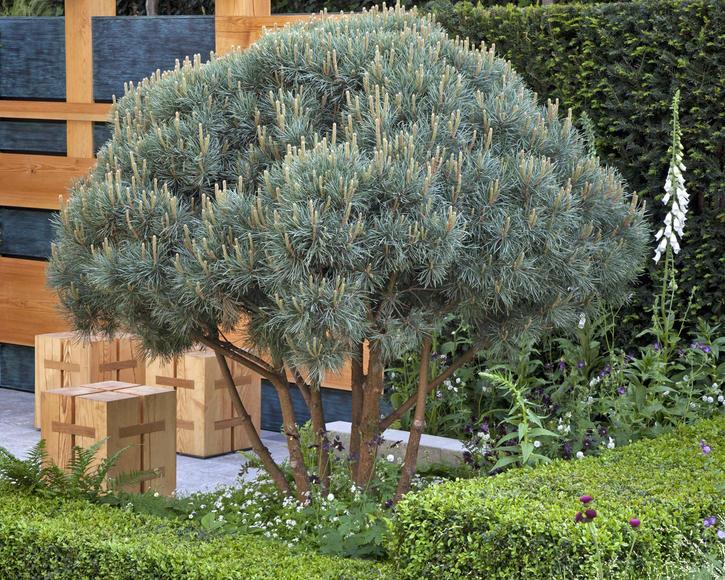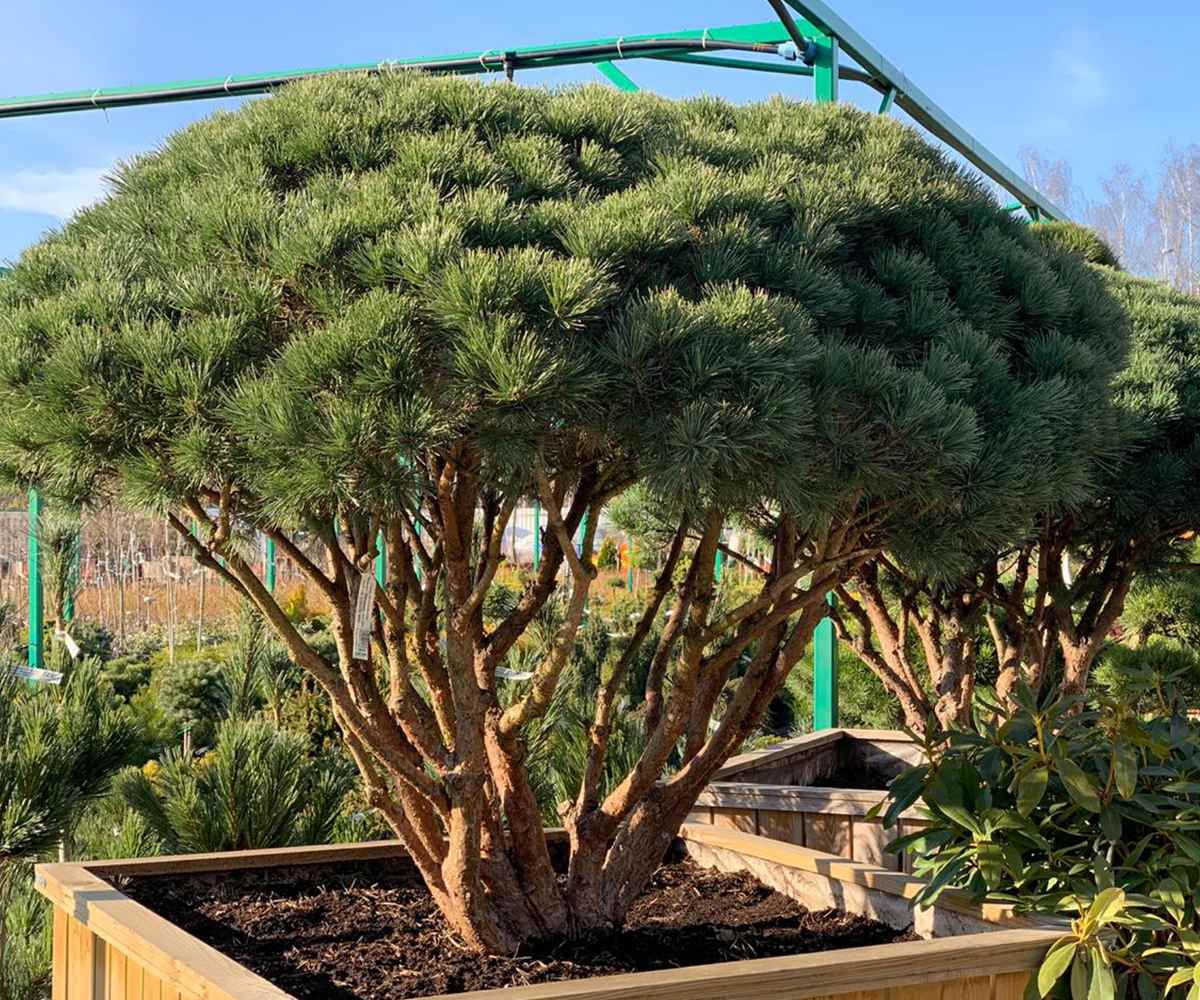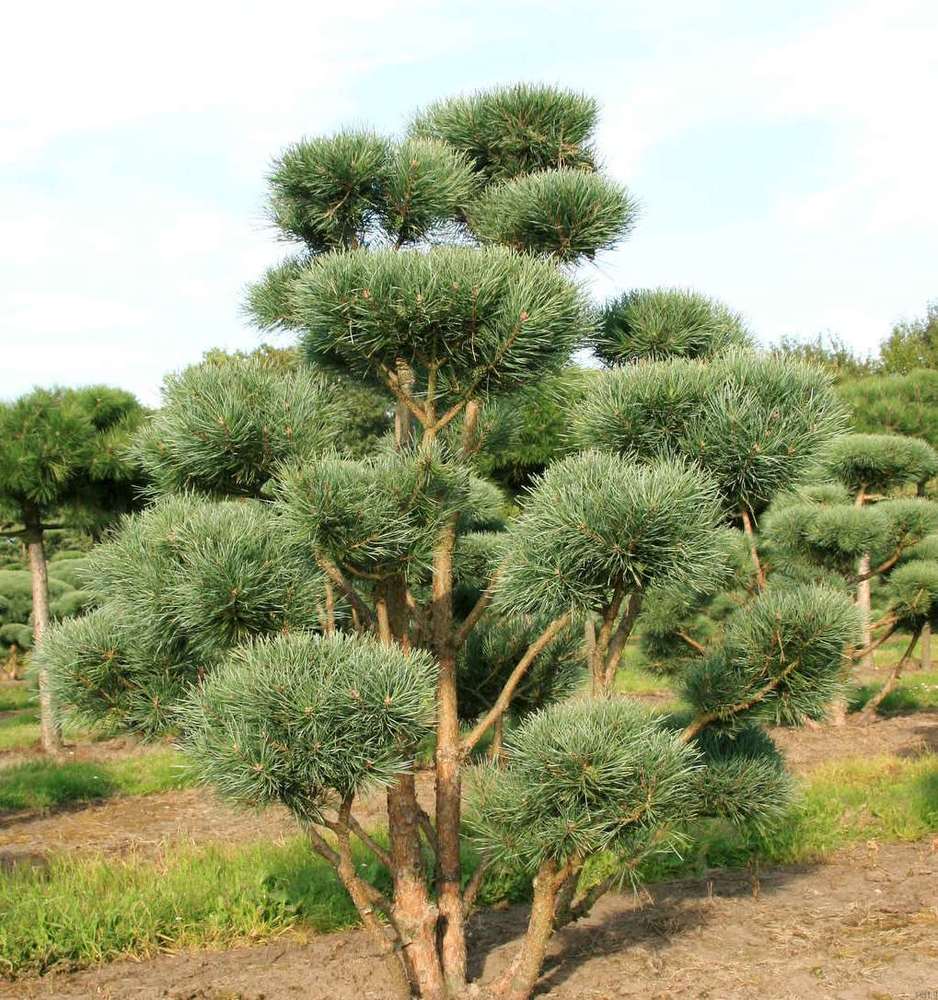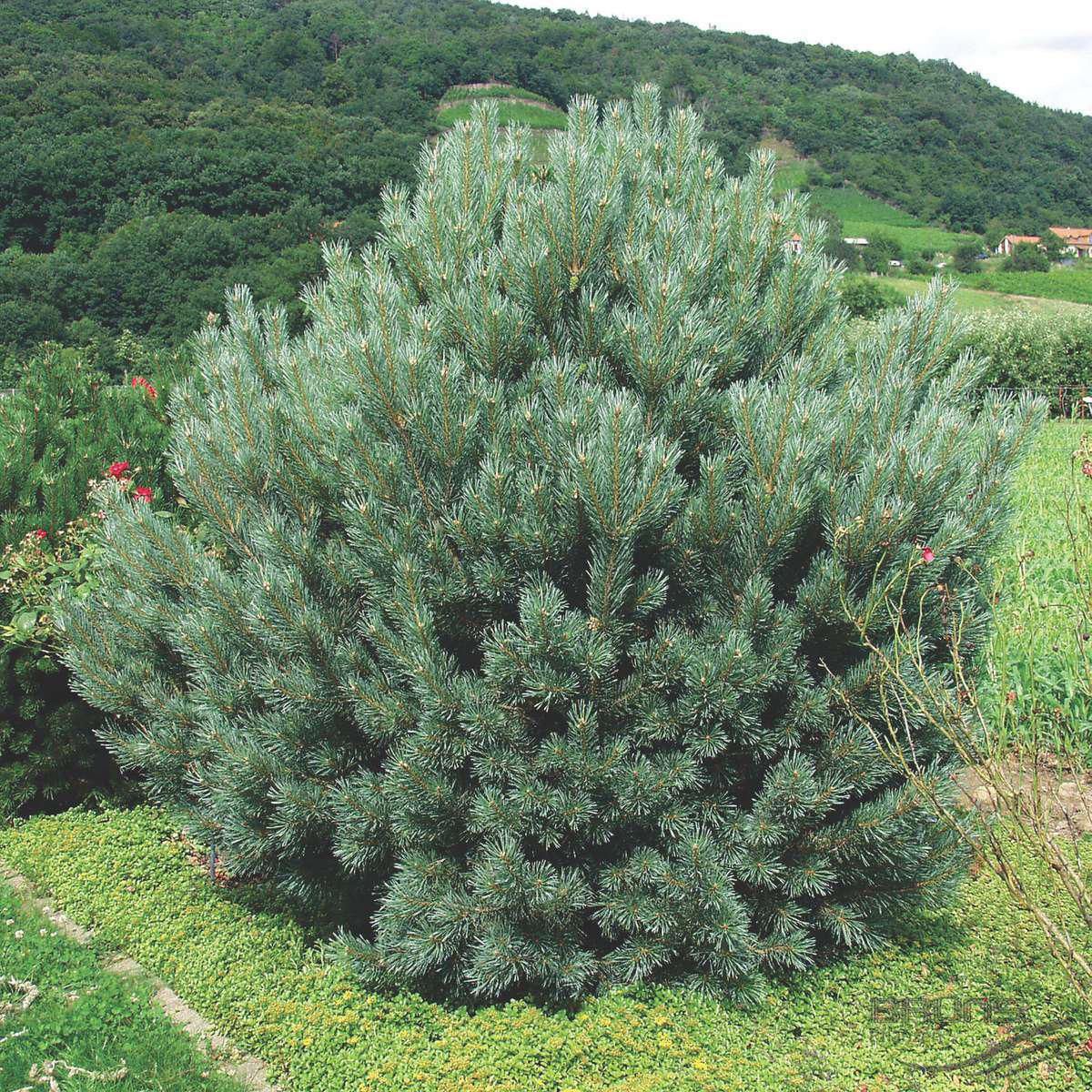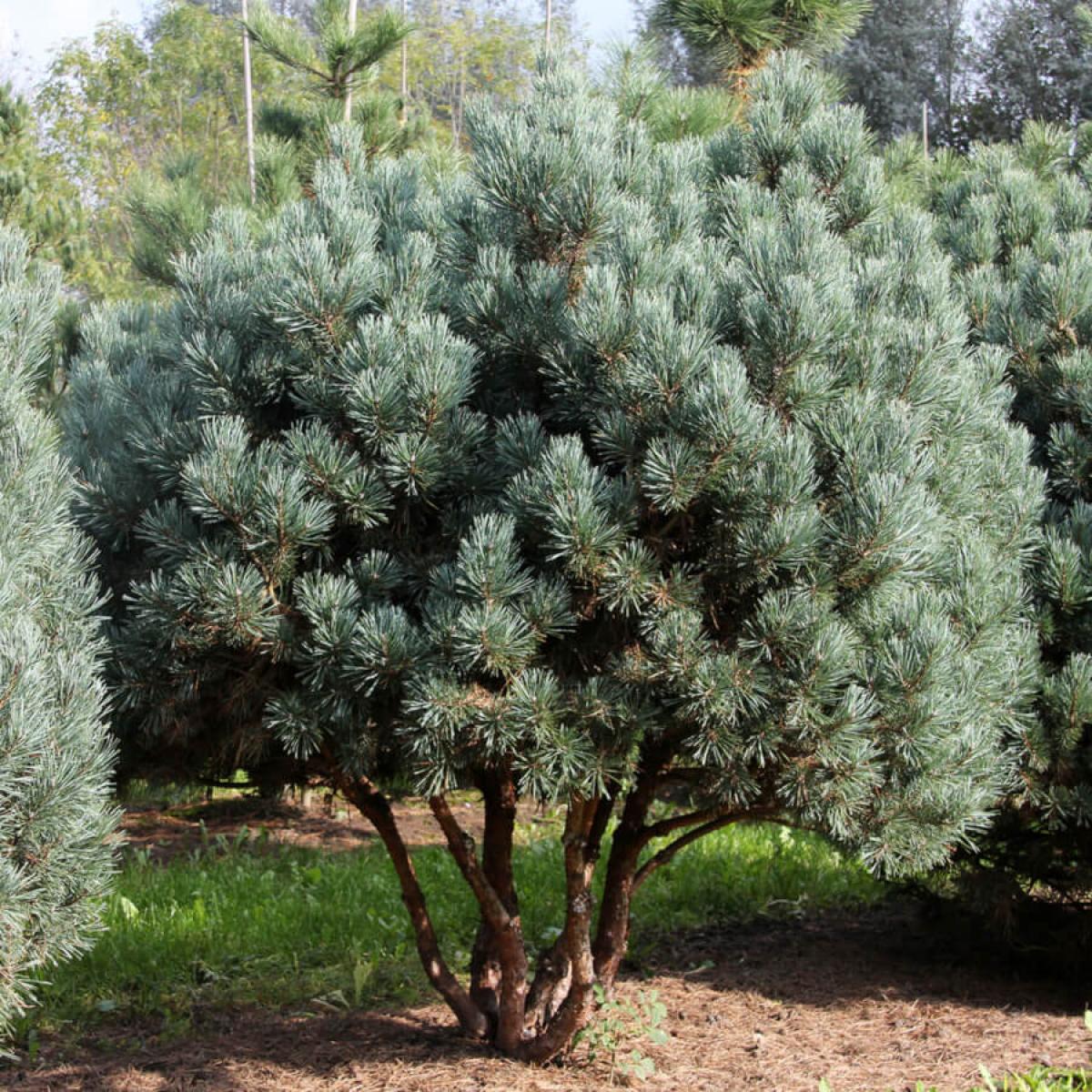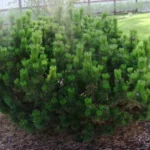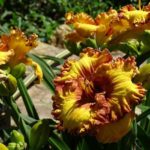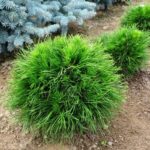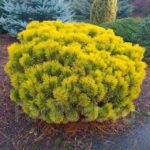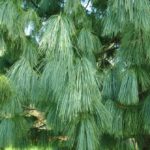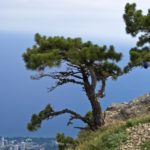The Vatereri pine is an ornamental variety of the common variety. This culture has been popular for more than a hundred years. It comes from Britain and is considered very popular among European gardeners. The plant is often used in landscape design in summer cottages and parks. An important advantage of culture is its slow development. Thanks to this, it perfectly complements even small spaces.
- Characteristics of wood
- Appearance
- Distribution area
- How to plant a pine tree correctly
- Selection of seedlings
- Soil preparation
- Step-by-step instruction
- Tree care
- Watering and fertilizing
- Loosening and mulching
- Trimming
- Preparing for winter
- How to propagate by tree
- What can a tree become infected with?
- Pests and their control
- Application
Characteristics of wood
According to the botanical description, Scots pine is a dwarf variety. This culture was discovered by the British scientist Anthony Waterer, in whose honor it received its name.
Appearance
This variety is a large and dense shrub, which has a rounded crown and belongs to the Pine family. The culture is characterized by a beautiful blue color and a high degree of frost resistance. It is mainly found in mountainous areas.
This culture is characterized by the following features:
- Young plants have a columnar crown. At an older age, it acquires a rounded shape and becomes loose.
- The average height of the plant is 4-5 meters. By the age of 30, the crop grows up to 15 meters.
- The circumference of a pine tree can be 8-12 meters.
- The needles are blue in color. They are quite prickly and form bunches of 2-3 pieces.
- This crop has an average growth rate. In 1 year, the pine tree grows 10-11 centimeters.
- The plant is distinguished by cone-shaped cones. The color of male fruits varies from light pink to yellow. Their sizes are 0.8-1.2 centimeters. Female cones are brown in color and 3-5 centimeters long.
- Fruit ripening occurs in late November or early December. At the end of winter they fully open, and in April they fall off.
Distribution area
Scots pine Watereri is characterized by its low maintenance requirements and is characterized by a high degree of resistance to severe and prolonged frosts. The plant can be grown in the southern regions and in the middle zone. It grows well in Siberia and the Urals. Ephedra is widespread in Spain and England.It is also found in China and Mongolia.
How to plant a pine tree correctly
In order for the Watereri pine to develop well, it is important to carry out planting work correctly. In this case, you need to pay attention to the selection of seedlings and preparation of the site.
Selection of seedlings
It is recommended to purchase the culture from a specialized nursery. In this case, you should give preference to a plant with closed roots. His age must exceed 2 years. Such seedlings are considered the hardiest. They quickly take root after planting on the site.
When purchasing a crop with an open root system, it must be immediately planted in the soil. Otherwise it will dry out. When choosing a plant, it is important to carefully examine the crown. It must be alive and have a intact trunk. There should be no injuries, cracks, stains or growths on the shoots.
Soil preparation
To plant the plant, you should choose a sunny area with shade during the daytime, since young crops can get burned. The place must be protected from the wind. It is also worth paying attention to the occurrence of groundwater - it must be deep enough.
Watereri pine prefers sandy or loamy soil with neutral acidity parameters and a high content of nutrients. Adding sand and peat will help make heavy soil lighter. For 1 square meter it is worth using 20 kilograms of each substance. You can also improve the structure of the soil using 2 buckets of clay.
To reduce the acidity of the soil, you should use dolomite flour.Calcite or slaked lime are also suitable for this purpose. For 1 square meter it is worth using 350 grams of such components. Then the bed needs to be dug up, leveled and watered.
Step-by-step instruction
Planting work is recommended to be carried out from late April to early May. Over the summer, the seedlings will be able to take root, form a new root system and above-ground part, and also prepare for winter. In the southern regions, it is permissible to carry out planting work in the fall. However, this must be done no later than the first half of September.
To plant a crop, it is recommended to do the following:
- Water the crop well 2 hours before planting
- Dig a hole slightly larger than the plant's root system.
- Place a drainage layer on the bottom. To do this, it is permissible to use pebbles, crushed brick or crushed stone. A fertile substrate needs to be laid on top. To make it, it is recommended to mix the soil from the hole with turf, sand and peat. This is done in a ratio of 3:2:1:2. You also need to add 100 grams of potassium sulfate and superphosphate to the composition.
- Place the seedling in the hole, add soil and compact the substrate around the trunk.
- Water the plant generously. For 1 pine tree you need to use 2 buckets of water. After absorbing moisture, it is recommended to cover the tree trunk circle with a mulch layer. For this, it is permissible to use peat or pine sawdust.
When planting a crop, it is important to control that the root collar remains flush with the ground surface. Otherwise, there is a risk of rotting and death of the crop. When planting several trees, it is worth maintaining an interval of 3-3.5 meters between them.
Tree care
In order for a culture to grow and develop normally, it needs proper care. In this case, a number of rules must be observed.
Watering and fertilizing
During the first few months, young plants require frequent watering. Thanks to this, they will quickly grow greenery and root systems. It is recommended to moisten the soil at intervals of 3-4 days. For 1 seedling it is worth using 10-15 liters of water.
Mature pines over 3 years old require less water. In this case, 4 waterings per season are enough. It is recommended to use 50 liters of water for 1 tree.
Sprinkling the crown is considered a fairly useful procedure. It has a beneficial effect on the development of young growth and helps protect the crop from damage by parasites. Spraying should be done in the evenings - after sunset. It is recommended to do this at intervals of 3-4 days.
Fertilizing helps strengthen the plant's immunity, increases resistance to cold and helps improve its decorative properties. For the first time, it is worth applying nitrophoska or ammophoska under the pine tree. To prepare the working solution, it is recommended to use 30-40 grams of the drug per 10 liters of water. This fertilizer is used the next year after planting. It is best to apply it in early spring - before the beginning of the growing season.
The second time, the pine is fed with a combination of superphosphate and potassium sulfate. To prepare the working solution, it is recommended to take 15 grams of each product per 1 bucket of water. It is recommended to use this composition in the fall - before the onset of cold weather. Fertilizing should be combined with watering. This will help improve the absorption of active components.
Additionally, it is worth irrigating the crown. For this purpose, agents are used in the form of chelates. Suitable compositions include “Epin”, “Heteroauxin”, “Quadris”. They are applied 3 times during the season.
Loosening and mulching
The soil in the tree trunk circle needs to be loosened periodically.This will help fill the soil with oxygen. The dwarf shrub develops well in a light and breathable substrate. During loosening, it is imperative to get rid of weeds. Mulching the soil is of no small importance. For this purpose, it is worth using peat or crushed bark.
Trimming
In May, the buds that were laid last year begin to actively grow on the tree. Therefore, during this period it is necessary to trim the crown. This is a simple procedure that is aimed at trimming young shoots. This allows you to give the tree crown almost any shape.
Preparing for winter
Mature plants have a high degree of frost resistance. Up to 4 years of age, Watereri pines require insulation. In the fall, they should be insulated with spruce branches, and in the spring, the shelter should be removed. However, it is prohibited to use materials that create a greenhouse effect. The shrub needs access to air. An additional advantage of using spruce branches is protection against sunburn.
How to propagate by tree
Watereri pine reproduces well by cuttings. To carry out this procedure, it is necessary to cut shoots up to 20 centimeters in size from the top of the crop. To ensure that they take root well, it is recommended to prepare the branch with a piece of old bark. Then the shoots need to be cleared from the bottom of the needles and immersed for 30 minutes in the Epin solution.
It is recommended to plant cuttings in a large container with drainage holes. It needs to be filled with a composition based on sand and peat. It is worth deepening the cuttings no more than 4 centimeters. In this case, the angle of inclination should be 45 degrees. It is recommended to water the plantings, cover them with film and place them in a well-lit place.It is recommended to keep them at a temperature of +20-22 degrees.
What can a tree become infected with?
When growing Watereri pine, the bark and needles must be systematically inspected. In this case, special attention should be paid to the color and general condition of the tree. Thanks to this, it will be possible to detect diseases in a timely manner.
Most often, culture suffers from the following pathologies:
- Rust - signs of the disease include swelling and orange spots that first appear on the shoots and then affect the entire tree. Bordeaux mixture helps to cope with this pathology. However, severely affected fragments must be removed and burned.
- Schutte vulgaris - this disease is associated with infection by a fungus. In this case, the plant becomes covered with small brown spots. Then they enlarge, acquire a yellow color and turn brown. Affected needles fall off, and myceliums form under infected trees. To eliminate the disease, it is recommended to use colloidal sulfur or Bordeaux mixture.
Pests and their control
Of the parasites, the spruce-fir hermes poses the greatest danger to the plant. Its colonies that live on the tree resemble white cotton wool. Pest activity provokes yellowing of the needles. To cope with parasites, it is worth treating the crop with insecticides.
Other pests that pose a threat to Watereri pine include:
- Bark beetle. These insects attack wood. Pests make passages in it and lay eggs there. In this case, it is recommended to apply insecticides to the holes. It is also worth treating the surface of the crop with these preparations.
- Spruce sawfly. In this case, a change in the color of the needles is observed. It takes on a reddish tint. To protect the crop, it is recommended to use insecticidal preparations.
Application
Watereri pine is often used in landscape design. It fits perfectly into different compositions. Also, designers often decorate pine trees in bonsai style.
In addition, the plant has the following properties:
- absorbs noise and dust;
- releases a large amount of phytoncides;
- creates a special microclimate on the site.
Watereri pine is a fairly popular crop that is often used for landscaping. To preserve the decorative properties of the plant, it requires proper care.

